3D Laser Scanning Concrete
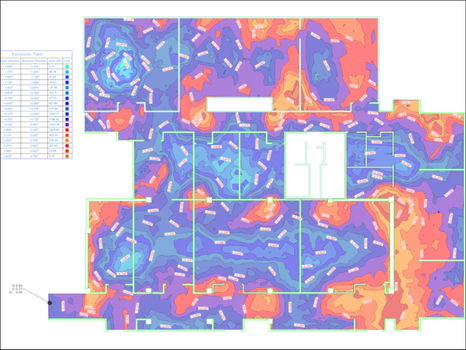
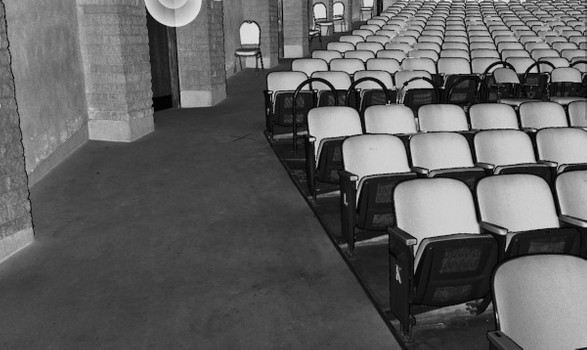
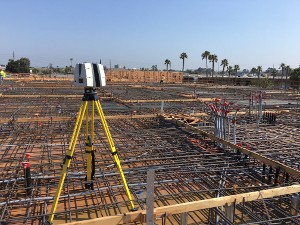
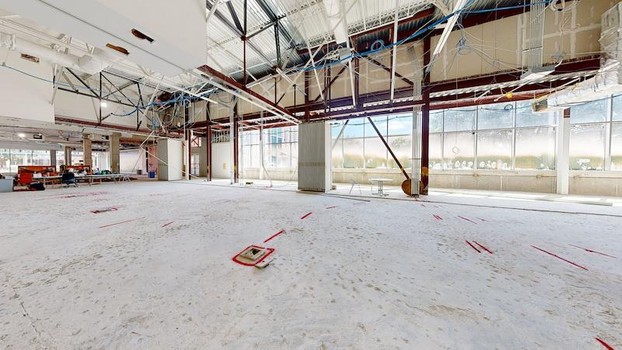
Concrete Laser Scanning and Imaging
If you are a concrete contractor, or a general contractor working with subcontractors, you know there are a number of project aspects that can be particularly challenging to get right. Collecting precise project data before, during and even after a project and sharing that data with the field and the office fosters better communication and coordination, ultimately saving you time, money and frustration.
Whether you are performing concrete inspection, layout or documentation, GPRS delivers solutions to expedite your project. 3D laser scanning helps concrete contractors and engineers better manage construction projects with precise data to aid decision making.
GPRS 3D Laser Scanning Concrete Applications
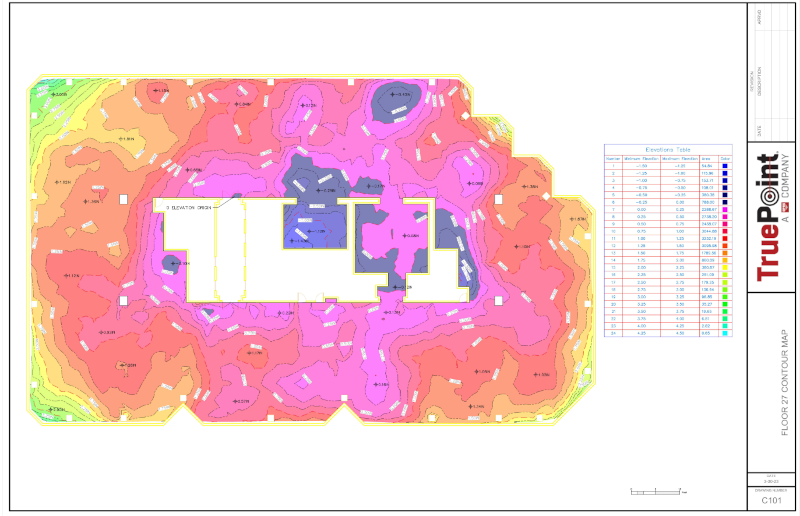
Floor Flatness and Floor Levelness Analysis
The methods used today for conducting floor flatness/floor levelness (FF/FL) slab flatness analysis are manual and labor intensive. A commonly used method requires the creation of a grid on a concrete slab following a set of specifications before taking manual readings. Contractors that use the ASTM E1155 standard method for determining floor flatness (FF) and floor levelness (FL) numbers typically take a measurement every foot along the grid lines. Using this method, even small projects require a substantial amount of time to complete data collection.
Highly detailed point cloud data is used to determine FF and FL values on concrete floor/flatwork. Color elevation maps can be quickly produced from the point cloud data to visualize floor flatness and identify the high and low points in concrete and calculate the boundaries of any areas that need to be adjusted. The data points collected maintain their coordinates and can be easily communicated to the project team. Fast and accurate cut/fill calculations can be computed. Contractors can fix elevation discrepancies with speed and assurance.
Laser scanning produces a colorized elevation map of the entire floor. This way if questions arise, stakeholders can be educated on the standards and the project is validated with data. 3D laser scanning can protect the concrete contractor and minimize disputes.
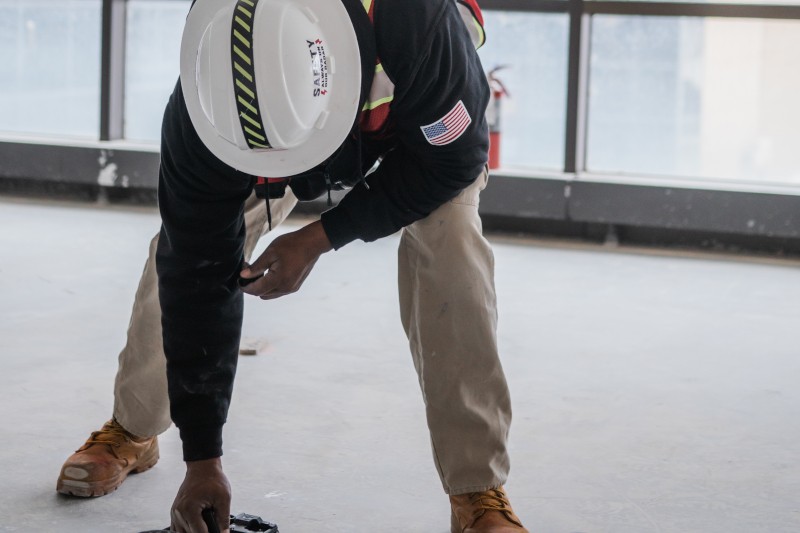
Laser Scanning Concrete Pre-Pour and Post-Pour
Laser scanning is used to capture the pre concrete pour. Contractors use 3D laser scan data to demonstrate that the assets exist per the engineering drawings, giving complete pre-pour asset documentation from the start.
Laser scanning can capture the finished pour with millimeter accuracy to ensure the pour was compliant with the design. Also, once the slab has met strength targets, completed post tensioning, and all temporary shoring is removed, the slab can be laser scanned again. This provides the true deformation of the structure.
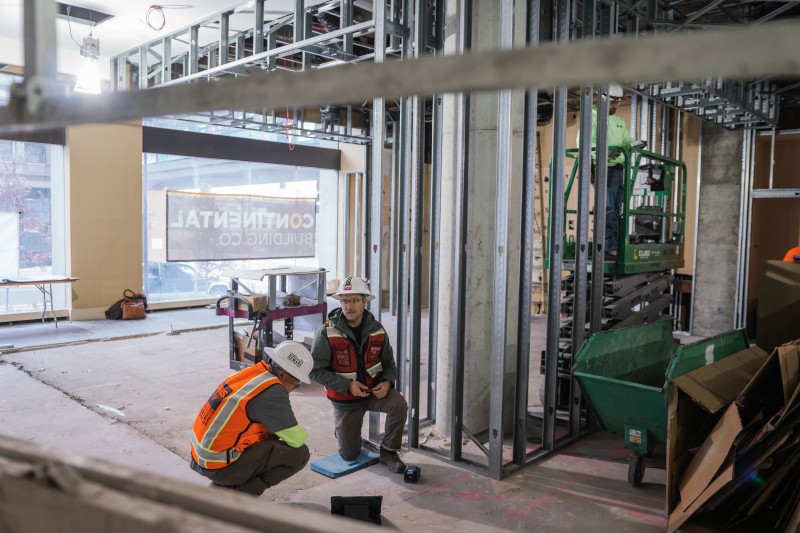
Laser Scanning for Tolerances
Laser scanning is rapidly being adopted to check tolerances. It provides contractors, inspectors, and designers with quantitative data. Contractors will know if concrete floors, walls, stairs, ramps, and columns are out of tolerance. Scans can be performed multiple times in the same area while construction proceeds.
3D laser scanning can also check the status of steel beams before and after concrete pouring to document the location of the steel beams, slab thickness and whether everything is in tolerance.
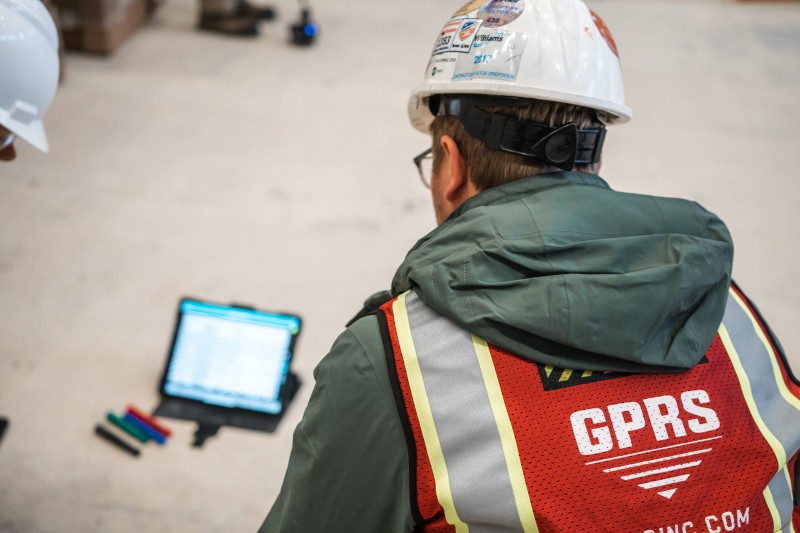
Laser Scanning for Deflection
3D laser scanning can measure concrete slab structural cracks and deflection. The deflection in slabs can occur over time due to settling, shrinkage, fatigue, design errors, aging, point loads, damage, and more.
Detailed information about existing conditions is documented in a point cloud, accurate to within millimeters. 2D drawings and 3D models can be created to document cracks and deflection and design a plan to correct it.

Laser Scanning to Verify MEP Concrete Work
3D laser scanning provides the ultimate solution for verifying MEP concrete work right in the field. Ensure all conduit, rebar, and embedded sleeves are in their proper place. Visualize and immediately identify problem areas, then use the documentation to communicate back to the field crew and office. 3D laser scanning can easily capture data for all surface types such as pre- and post-pour of concrete slabs, structures and MEP installations, in a fraction of what it would take to manually verify proper placement.
Once the concrete is poured, nothing can be changed. 3D laser scanning is a powerful tool to help monitor a project site to make sure everything is ready for a concrete pour. There is no need to risk discovering a problem when it is hard to go back. Data collected will be an asset for years to come, as it can be referenced for any future coring or drilling needs, showing where everything was embedded in the slab prior to pouring.

Laser Scanning for Construction Verification
Locate potential risks sooner with 3D laser scanning to capture real-time as-built verification directly at the jobsite. Laser scanning can be used to compare scans against the as-built drawings or model, detecting incorrect placements to fix errors quickly. Contractors and engineers can ensure their design plans are accurate and eliminate clashes before they turn into change orders.
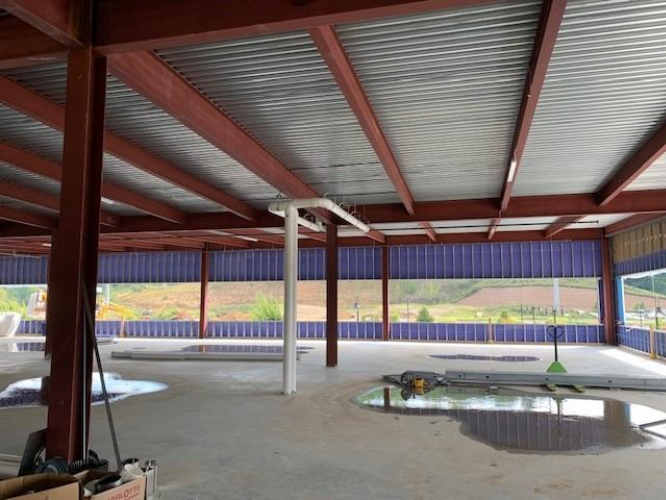
Structural Assessment of Concrete
3D laser scanning can assess and document floors, ceiling slabs, walls, and columns of reinforced concrete buildings. This can be done to create as-builts, identify structural defects, or monitor shifts in the building over time. The spatial information of the point cloud helps make decisions based on accurate data. Identifying defects of components and completing virtual design planning to remedy them will minimize rework costs.
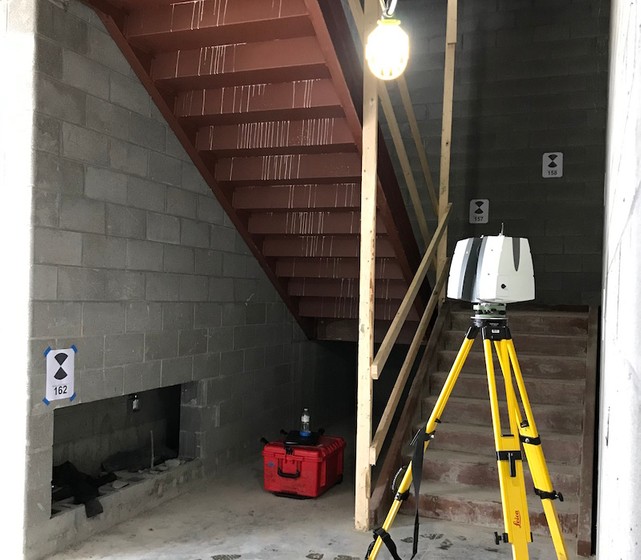
Prefabrication of Stairs and Railing Systems
3D laser scanning can document existing structural elements, staircases, walkways, and railing systems for prefabrication. All necessary measurements are captured and transformed into 3D BIM models, 3D mesh models, or 2D CAD drawings for better project planning, ensuring accuracy with little to no rework. Data ensures elements are prefabricated to the right specifications and expedites installation.
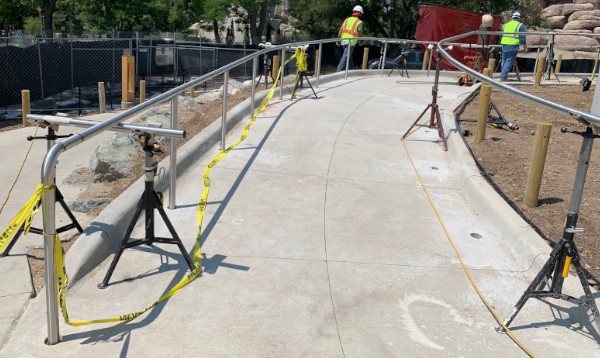
Inspecting Ramps and Cross Slopes for ADA Compliance
3D laser scanning can be used for inspecting ramps and cross slopes for compliance with ADA requirements. Curb ramps must meet specific standards for width, slope, cross slope, placement, and other features to comply with ADA requirements. The current methods used to inspect ramp and cross slopes include manual tape measures and levels. These methods are unreliable. Laser scanning documents ramps and cross slopes with 2-4mm accuracy in minutes. Point cloud data can be delivered quickly, or 2D drawings and 3D models can be created for site evaluation. Data allows contractors or engineers to virtually see the site and obtain measurements for redesign, if required.
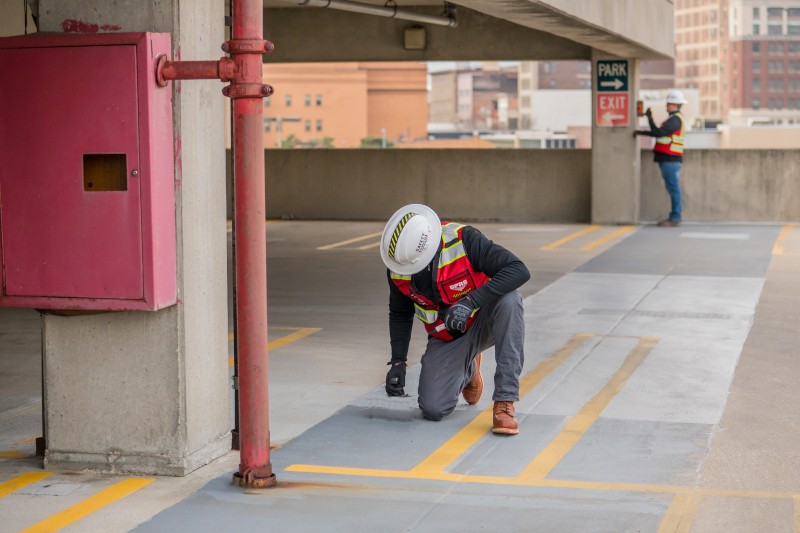
Inspecting Parking Garages
3D laser scan data can be used to estimate clearances, measure slab thickness, measure the thickness and depth of beams, and assess ramps in parking garages. The point cloud data collected can be used to generate architectural drawings, elevation views, color elevation maps, and 3D models for contractors.

Assess Concrete Stairs
3D laser scanning can document concrete stair dimensions and step construction details. Tread height and depth can be compared to building code specifications. Data can be received in point cloud format, 2D CAD elevations and 3D models. This can be done for documentation repair and construction defect litigation.
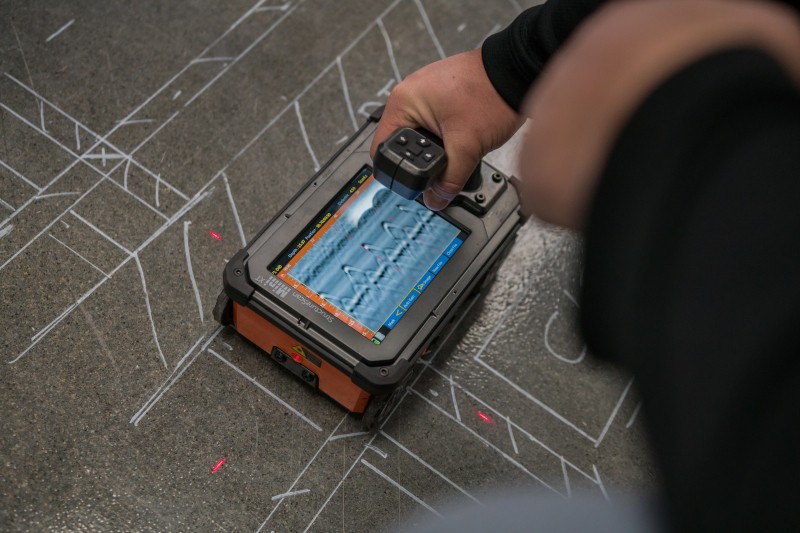
3D Laser Scanning GPR
3D laser scanning can capture ground penetrating radar (GPR) markings to accurately document underground utilities, rebar, and post tension cables located under concrete. 3D models and 2D site plans can be created to eliminate potential problems during construction and improve safety before cutting or drilling into concrete.
GPR Concrete Applications
Any project involving post-tension or slab-on-grade concrete contains an inherent risk of costly damage and/or injury when you core or cut into the slab. Rebar, conduit, and post-tension cables pose significant strike risks, and each has its own unique GPR imaging signature. GPRS’ concrete scanning service provides digital concrete scanning with ground penetrating radar (GPR) to accurately pinpoint the location of each hazard and map it in detail, so there is never a question of where you can cut and where you can’t. Unlike concrete x-ray services, GPR concrete imaging does not require you to close off sections of your site to avoid radiation. In most cases, your work can continue while we scan and locate slab reinforcement and conduits with 99.8%+ accuracy, so that you can safely cut and drill.
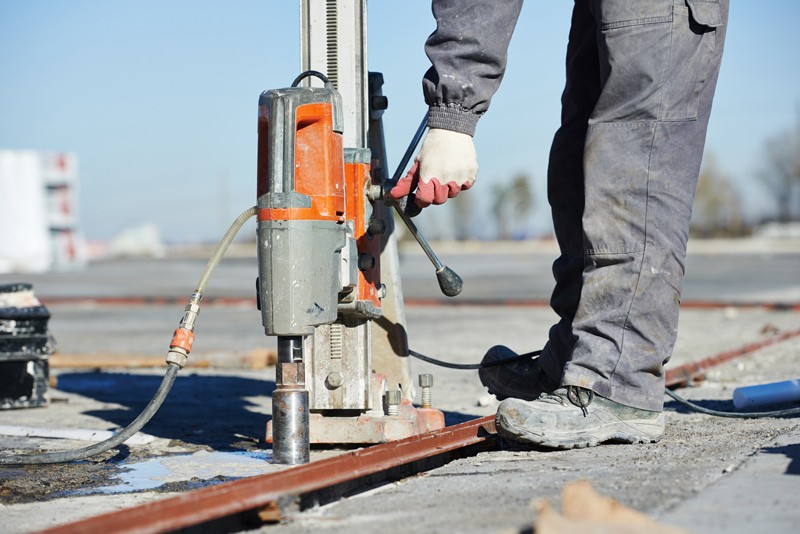
Concrete Coring Applications
Because concrete drilling comes at a risk, GPRS Project Managers are equipped with multiple technologies to clear areas prior to core drilling and anchoring. Upon completion of the scanning process, you will have a clear layout of the vertical and horizontal position of impediments such as post tension cables, rebar, beams, and conduits. Our scanning and imaging services can be completed on any surface including concrete slabs, walls, columns, and beams.
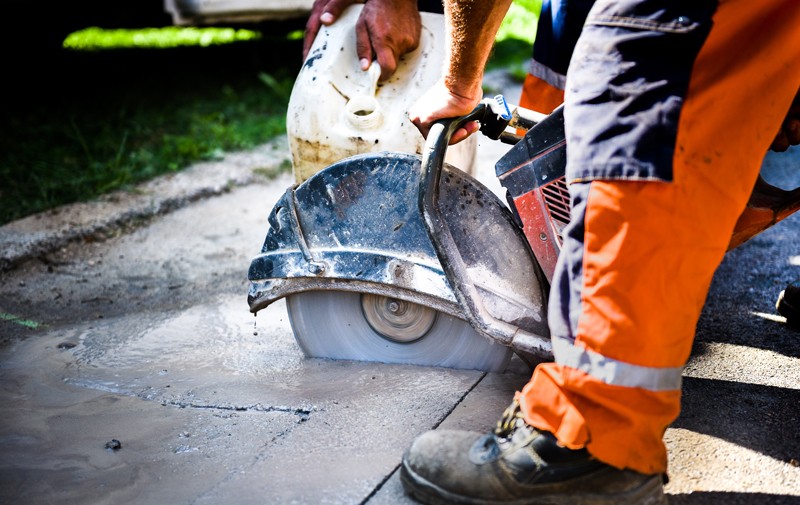
Saw-Cutting Applications
As with concrete coring, when saw cutting in a slab-on-grade scenario, locating unseen or buried objects is crucial. The risk of severing post tension cables, rebar, conduits, pipes, grade beams, or other obstructions runs high in saw-cutting applications. In order to identify these hazards, our Project Managers follow a detailed process, which includes multiple GPR antennas and a variety of other technologies. This in-depth process results in accurate information about hazards that lie in and below the concrete slab.
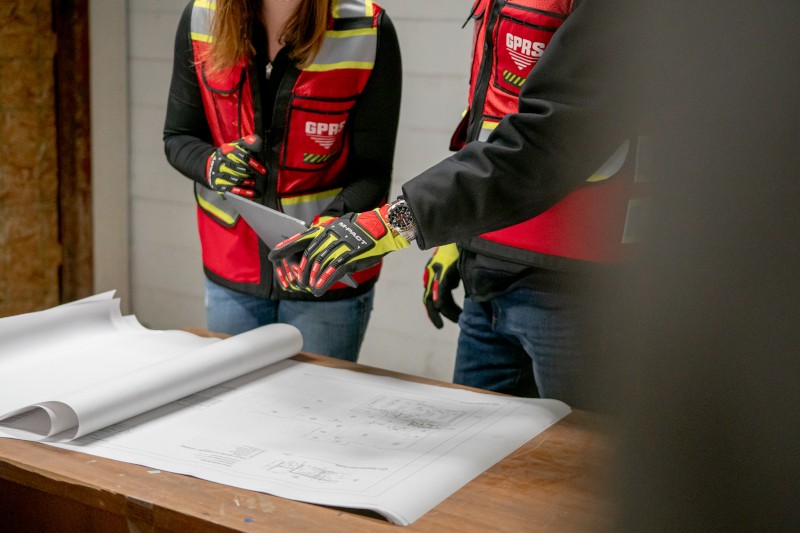
Pre-Planning and Design
There are many critical steps when planning a construction project, but one of the most crucial steps is to obtain accurate information regarding where future concrete penetrations will take place. When GPRS has the ability to scan concrete structures prior to the construction phase, we are able to reduce costly change orders and limit the redesign process. Unlike traditional concrete x-ray, our technologies have the capability to scan large areas and can provide our findings in detail via a field sketch, CAD drawing, or even a 3D model.
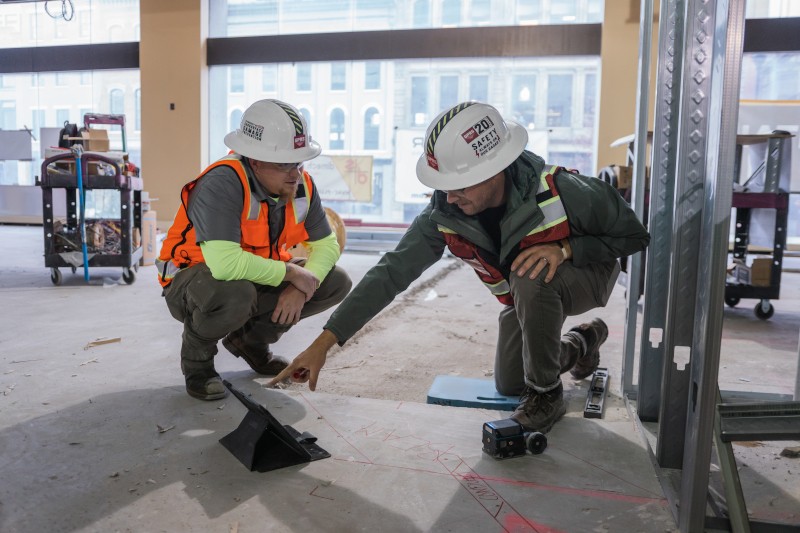
Structural Analysis
Ground penetrating radar is most commonly used to clear areas prior to saw cutting or core drilling, but our scanning equipment also has the capability to deliver much more detail. Project Managers are able to determine key slab information for Structural Engineers, including rebar and post-tension spacing and depth, concrete cover and overlay thickness, concrete thickness, and even dowel placement. With GPRS’ ability to scan complete concrete structures, we are not limited by size for structural analysis.
GPRS Concrete Scanning Services
With over 300 Project Managers, strategically stationed in every major market and city across the United States, GPRS has an unmatched nationwide service network that makes it quick and easy to find an expert Project Manager in any potential customer’s area. GPRS ensures they can reach your location within 24 to 48 hours of contact to solve all and any of your utility locating needs. Contact GPRS for information, pricing, and scheduling needs.
Case Studies for 3D Laser Scanning Concrete
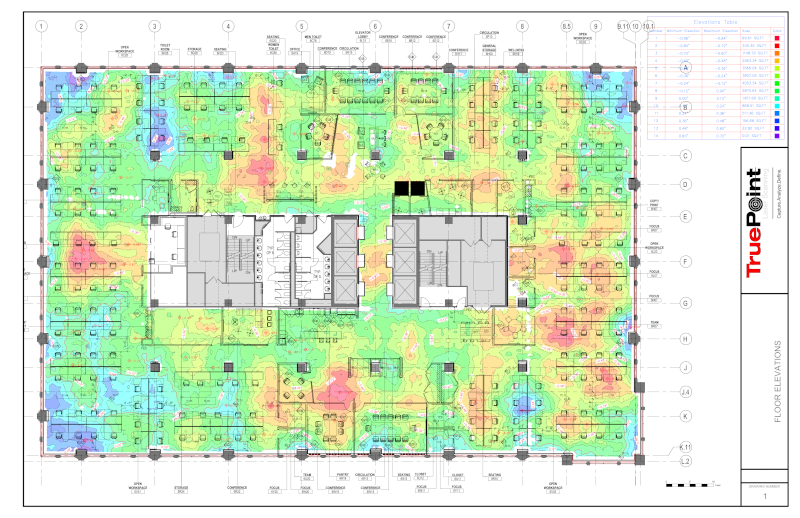
Case Study: Slab Deviation of Office Space
The concrete floors of a newly constructed corporate office were 3D laser scanned before the interior walls were built out to verify floor levelness. The point clouds were aligned to existing floor plans to generate a 2D color map showing deviation analysis. With this information, the general contractor could make necessary adjustments to level the floors. This project was phased over 3 mobilizations to accommodate the construction schedule as floors were made available.
Using this 2D color map deviation analysis, the general contractor was quickly able to analyze floor flatness.
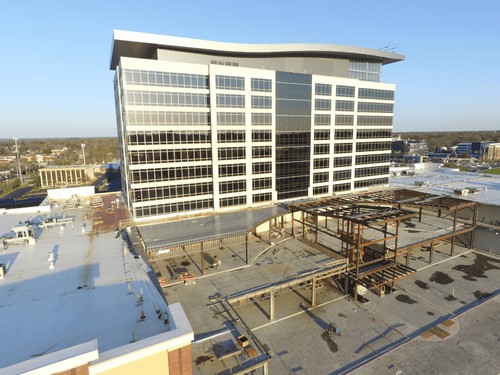
Case Study: Existing Conditions Analysis
Over 1.54 million sq. ft. of office, retail and parking garage space was 3D laser scanned to create an accurate Revit model of existing site conditions. The field-verified dimensions gave this client data to plan design changes with confidence. The benefits of 3D laser scanning analysis included: detention pond volume; stair, elevator and escalator shaft alignments; structural steel tolerances; exterior framing, cladding, mechanical coordination and curtain wall systems. Contractors installed design changes at a very high rate of efficiency, reducing field alterations, saving both time and money. The cost avoidance impact of an integrated scan-to-BIM workflow saved this project an estimated 5% of the total contract amount.
3D laser scanning measured 1.54 million square feet of retail, office and parking garage space with millimeter accuracy.
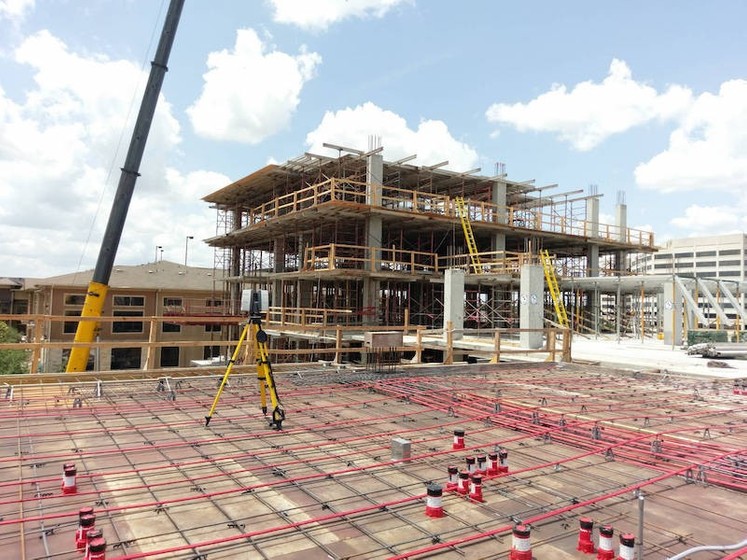
Case Study: Scanning Slabs Pre-Pour
An eight-story apartment complex had five to six concrete pours scheduled on specific dates over an 8-month period. 3D laser scanning was performed in each area to capture the existing conduit, post-tensioning, rebar plan and sleeves prior to the slab being poured. The existing conditions could be checked for irregularities and adjustments could be made before the pour. The scanning paid for itself on the first mobilization when it was determined that the plumber had mis-measured when placing the sleeves. Fortunately, this issue was discovered and corrected before the pour, saving the client thousands of dollars in rework and schedule delays.
GPRS 3D laser scanned an eight-story apartment complex over an 8-month period to capture the existing site conditions prior to the slab being poured.

Case Study: Railing Prefabrication at the Denver Zoo
3D laser scanning was used to capture an existing walkway to prefabricate an irregular steel railing offsite. A 3D mesh model ensured elements were prefabricated to the right specifications. Given the tight deadline and complexity of the work, laser scanning quickly modeled the contours of the concrete.
Precise as-built data ensured the railing system would fit properly when delivered and installed.
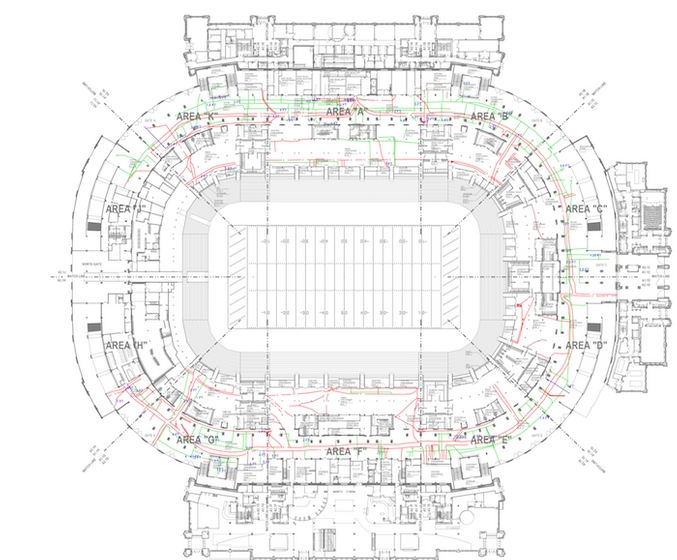
Case Study: Notre Dame Stadium GPR Documentation
160,000 square feet of GPR markings documenting active conduit, water and sanitary sewer lines were 3D laser scanned at a college football stadium. Point cloud data was used to create a 2D utility site plan. It was important to accurately document these utilities to eliminate potential problems during stadium renovations.
This site plan documented 160,000 square feet of space showing active conduit, water and sanitary sewer lines inside the stadium concourse.
Contact GPRS 3D Laser Scanning Today
Laser scanning can provide a complete digital documentation of any structure – top to bottom; slabs to columns; before, during, and after construction. It provides reliable dimensional data and quality assessments of concrete in a fraction of the time it takes with manual measurements. Checking the conformity of concrete levelness, dimensions and tolerances is important to prevent rework or failure during construction.
GPRS 3D Laser Scanning services can measure floor flatness and floor levelness, scan pre-pour and post-pour, check tolerances and deflection, perform MEP and construction verification, assess structural concrete, prefabricate stairs and railings, inspect for ADA compliance, survey parking garages, assess concrete stairs, laser scan GPR and more.
GPRS Laser Scanning is a nationally recognized leader in 3D laser scanning. Our team is dedicated to serving clients, delivering the highest quality point cloud data, 3D models and 2D drawings on time and on budget.
The cost of 3D laser scanning can vary widely depending on your project scope. GPRS customizes every quote specific to your project’s needs. GPRS Project Managers use 3D laser scanners to capture every detail of your site, delivering building dimensions, locations, and layout with millimeter accuracy. This can include the aboveground structural, architectural, and MEP features, plus underground utility and concrete markings. Our Mapping & Modeling Team can deliver point clouds, 2D CAD drawings, 3D BIM models, 3D Mesh models, TruViews, and Virtual Tours at any level of detail.
For more information on 3D laser scanning for concrete construction, call 419-843-7226 or email Laser@gprsinc.com. We’re currently offering 10-minute presentations – would you like to schedule one? Click here.
Download Brochure: 3D Laser Scanning for Concrete Construction
This brochure explains the applications of 3D laser scanning for concrete construction.
